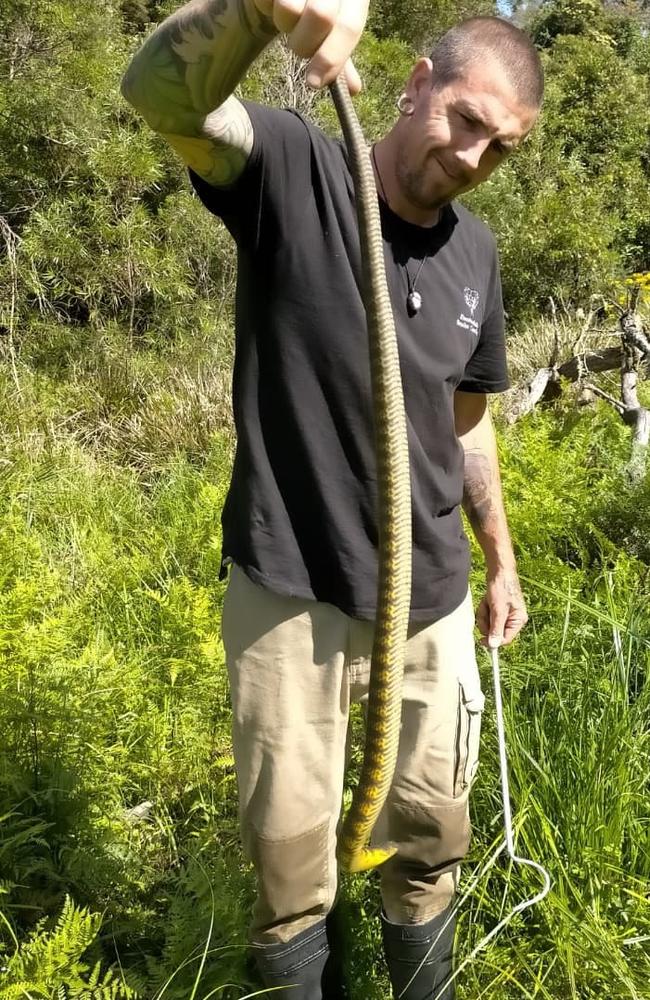Snakes on the rise on NSW south coast as wet weather heralds ‘return to normal’ after bushfires
Snake catchers on the NSW south coast have heralded a “return to normal” amid a spate of wet weather that has helped the feared reptile bounce back after the Black Summer bushfires.
The South Coast News
Don't miss out on the headlines from The South Coast News. Followed categories will be added to My News.
Devastated by the Black Summer bushfires, local snake and reptile populations are bouncing back amid unseasonably wet summer, with local snake catchers heralding a “return to normal” for the oft-marginalised reptile.
Like many native species, local snakes were unable to escape firestorms that swept through the south coast in late 2019.
More than two years later, Eurobodalla Snake Catcher owner Brendan Smith said those populations were slowly starting to creep up again.
He said 2022 marked a return to normal levels for the local snake handler.
“The snakes have definitely had a couple of good seasons now to catch up again, for the ones that were interrupted by the fires,” he said.
“Numbers are still down, in my opinion, but it’s evened itself out.”
In a usual year, Mr Smith said he would rescue as many as 200 snakes from backyards, buildings and bush tracks across the Eurobodalla.
Since the start of the snake season in August, he has already rescued around 170 snakes, with the season expected to end in mid-April.
The most common species he finds is the red-bellied black snake, with populations of tiger snakes, brown snakes, and mustard belly snakes also appearing in the region.

Many of those species, including the highly venomous brown snake, are only now laying their eggs, Mr Smith said, with a boon in sightings expected once the young emerge in coming months.
When the new hatchlings do emerge, Shoalhaven Snake Catcher Shaun Armstrong said they’ll be greeted by new, fertile feeding ground.
Reptiles such as frogs have become abundant because of recent rain, he said, and would provide food for local snakes.
“With the wetter periods, their prey species tend to breed a lot more,” he said.
“Frogs are going to breed a lot more and have a lot more offspring, so their population is going to increase.
“That’s going to correlate eventually into snakes.
Mr Armstrong said it was too early to conclusively say if populations were bouncing back because of the weather.
As an avid bushwalker, he lamented the devastation still present in many areas, with the forest that once would have homed snakes and other reptiles still being too depleted of resources to welcome species back.
In recent months, Mr Smith said he had been called out to a number of sightings of lace monitors.
The large reptile isn’t venomous but can still pose quite a threat, Ms Smith said.
Sightings were becoming increasingly common as the reptile enters into more built-up areas looking for food.
“For the ones that did survive the fires, there‘s just nothing for them out in the bush,” he said.
“All their old homing areas where they would typically go, because it is burnt, they've got nothing there to support them.”
As a result, lizards have taken to entering farms and raiding chicken coops, Mr Smith said.
“There’s just nothing to support them where they would typically live, or where they did previously live if they survived,” he said.

As for snakes, Mr Smith’s advice for people who come across one while hiking or at home is to stay calm and call a professional snake catcher.
“Snakes don’t chase people,” he said.
“If you see a snake or you‘ve startled a snake, stay completely still, and as soon as it starts moving away, or it realises you’re not a threat, you can then slowly back off.
“Once you startle a snake, to keep approaching it, that‘s going to set it off – It’s going to force it into a more defensive mode.
“People misinterpret that for the snake having a go at them, but its not.”




